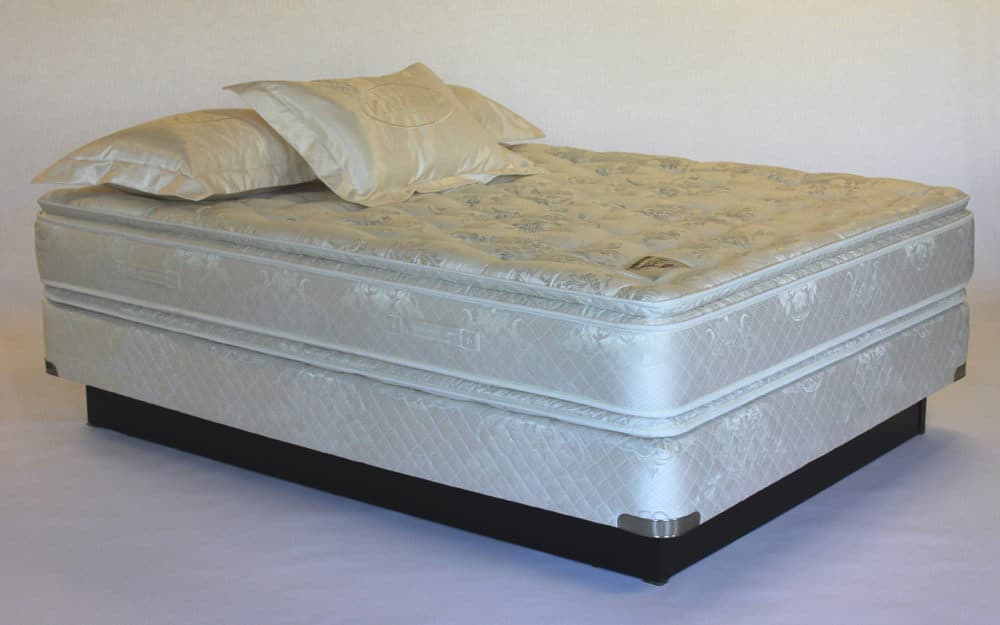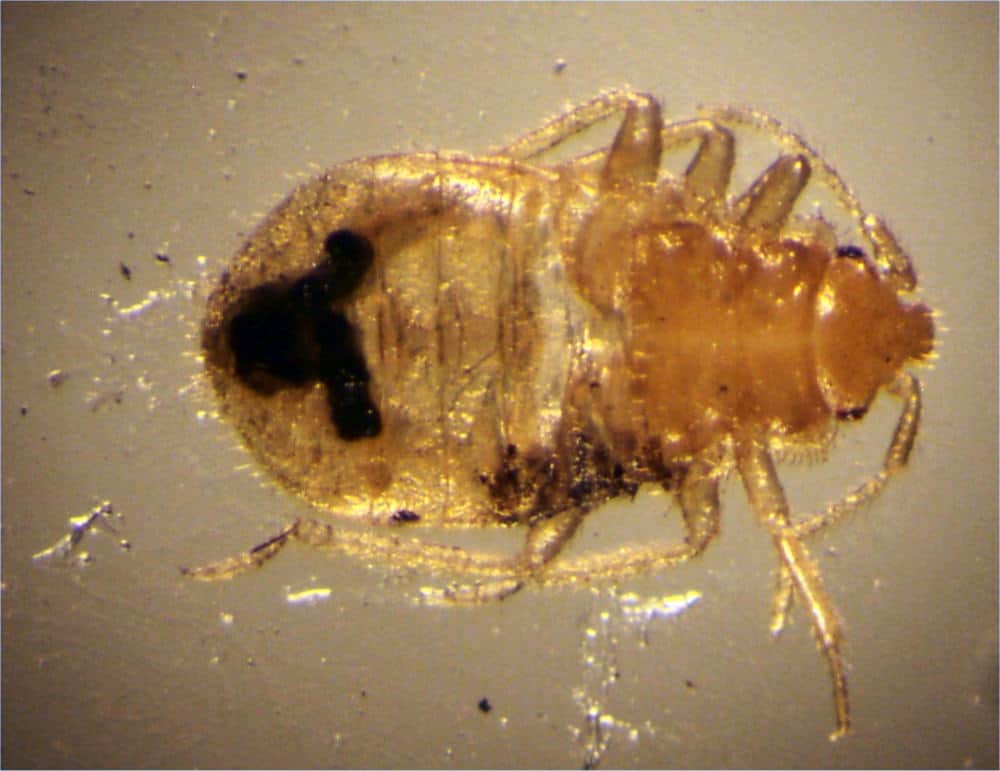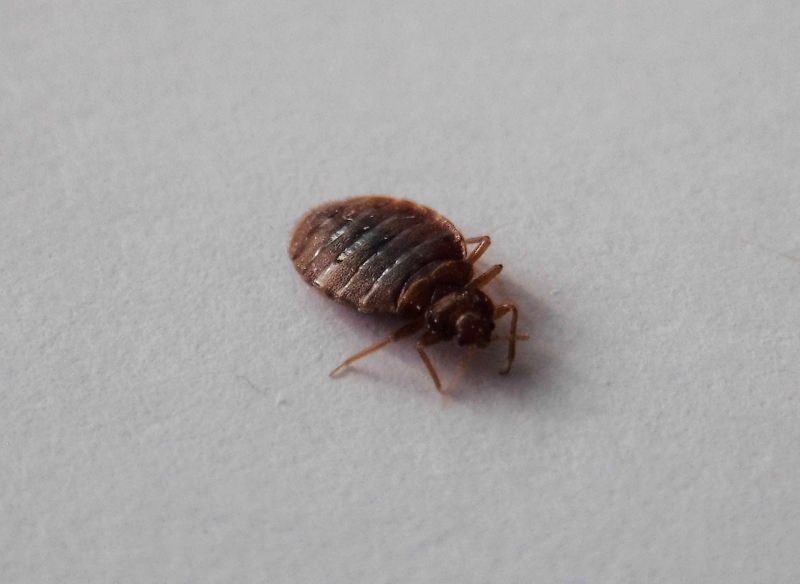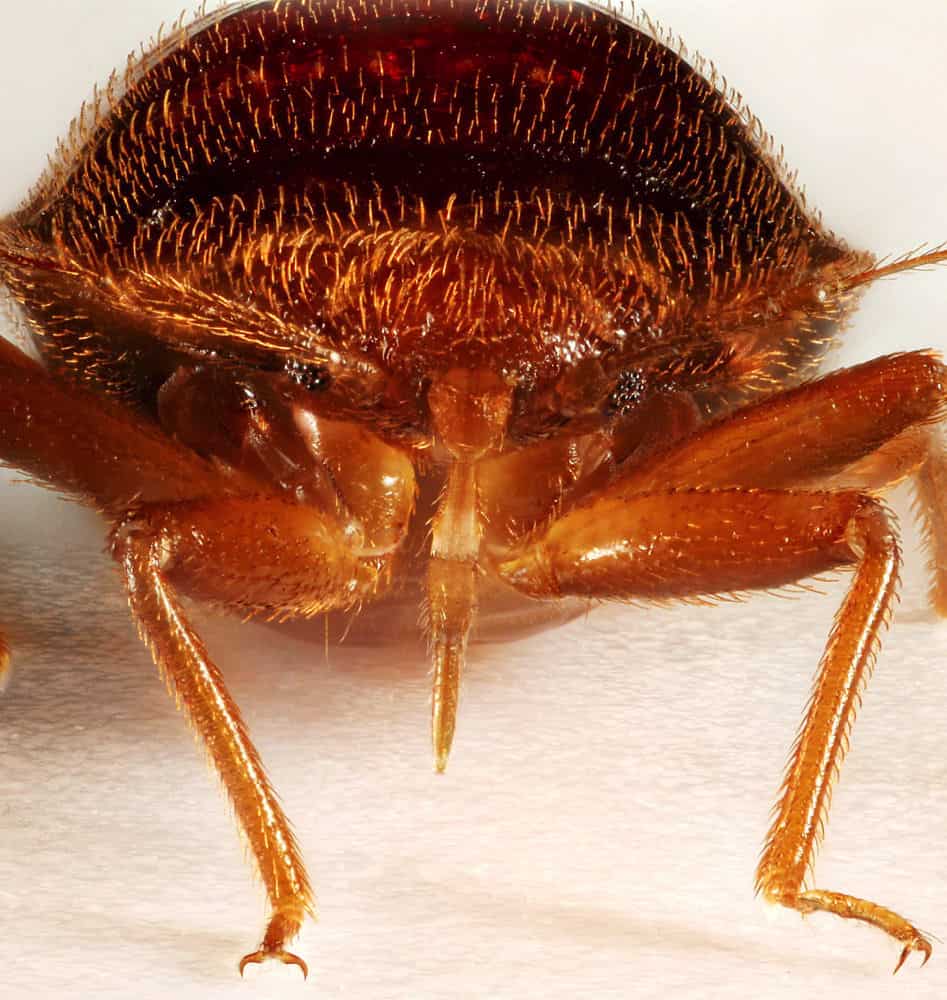I Found One Bed Bug But No Others: What Should I Do?
You were going about your business at home when you noticed something that made your heart stop – a bed bug on your mattress. What does finding a single bed bug mean? Are you doomed to battle a full-scale infestation? Here is everything you need to know about finding one bed bug but no others within your property.
Don’t Panic
It’s easy to understand why you might get worked up if you see a bed bug in your house. Wondering what else might be crawling around there, is enough to bother anyone.
Before you run out of your house screaming and scratching every inch of your body though, just calm down a bit and breathe. Finding one bed bug isn’t a crisis by itself. It could be a loner- a stray you picked up from a recent trip or a ride on public transport.
It could cause absolutely no disruption to your life or finances, so it’s best not to get carried away. Stay calm and let’s take a closer look at the situation and figure out what you should do.
Ensure It Is Definitely a Bed Bug
Before you jump the gun and start imagining the worst, you need to confirm that what you have found is actually a bed bug. To the untrained eye, other insects can be mistaken for bed bugs. To make identification even harder, most of us haven’t seen a bed bug in real life. That’s partially because they are such great hiders.
Since we haven’t seen them, it’s easy to think that any bug crawling on our bed is obviously a bed bug. Still, sometimes we can be wrong.
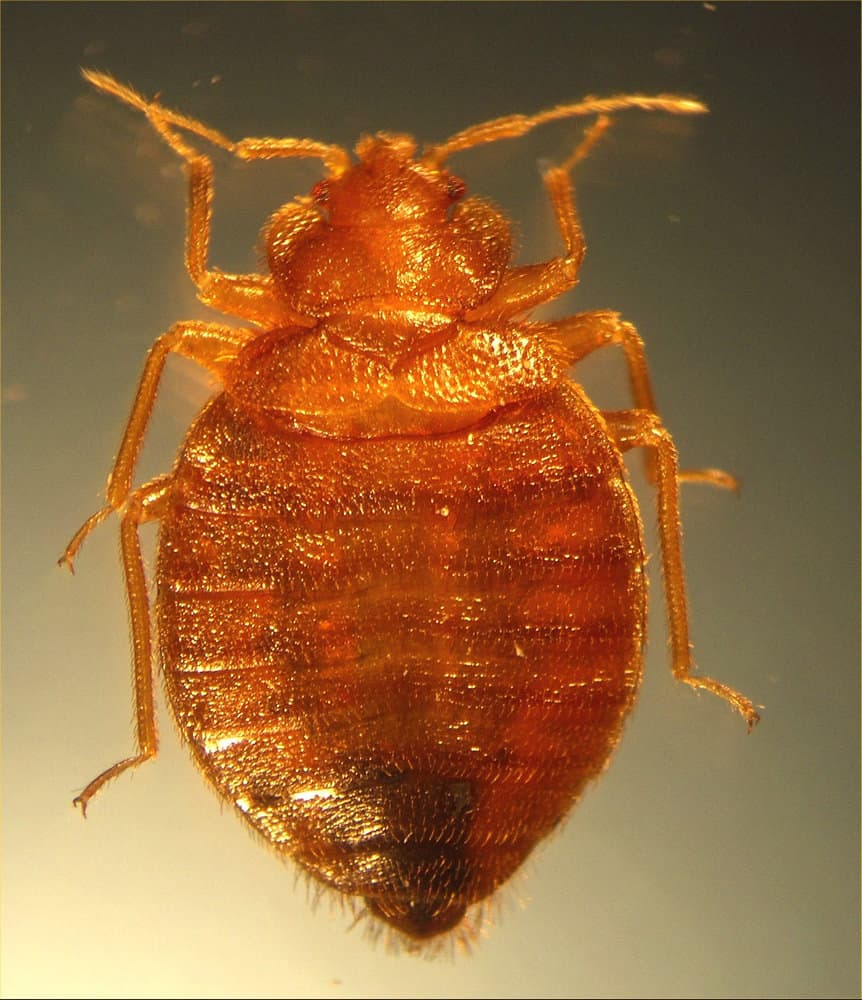
There are several bugs that look a bit like bed bugs, including the black carpet beetle, booklouse, spider beetle, and flea. Both bed bugs and black carpet beetles have oval bodies, for instance. Yet one big difference is that black carpet beetles have wings, while bed bugs don’t – although they do have wing pads.
Other than fleas and bed bugs, none of the other insects listed above bite people.
It is easy to see how people could be confused as many of the insects are in the same size range. Also, the colors of the bugs are fairly similar or hard to distinguish because the bugs are so little.
Adult bed bugs are roughly the size of an apple seed. If the bed bug has just eaten, its body has a balloon-like and elongated appearance and is reddish-brown in color. A bed bug that hasn’t eaten recently has a long, oval-shaped body, and is brown in color.
Nymphs, also known as junior bed bugs, are often translucent or whitish-yellow in color. Like adult bed bugs, nymphs are easier to spot when they have recently eaten. The size of nymphs depends on what stage of life they are in and how many times they have ‘fed.’
To help you identify if it really is a bed bug, look for wing pads. If you can’t tell, you might want to bring it into an exterminator’s or entomologist’s office, because they’ll definitely be able to tell you what kind of bug it is.
Was the Bed Bug Dead Or Alive?
Was the bug dead before you found it or was it alive and kicking? If the bed bug is dead and you haven’t noticed any bites on your body in the past couple of weeks, you might be in the clear.
On the other hand, if it was still alive, the likelihood of there being more bugs might increase. Those odds go up if it’s a female bed bug that you’ve found. Even if the bed bug came to your house as a single stowaway, if it was a pregnant female, there could have been enough time for her to begin repopulating a new army.
Carefully Inspect The Surrounding Area For More Bed Bugs
There is only one way to determine if the bed bug you found was a loner or part of a larger tribe- start investigating.
The first thing you should do is remove the clutter in the room you found the bug in. While bed bugs aren’t attracted to filth, having things lying around does give them more places to hide in.
To begin your search, start with your bed. They’re called bed bugs for a reason – that’s their favorite spot to hunt you down. They’re attracted to the warmth of your body and the carbon dioxide you give off. They’ll find both of those as you sleep in your bed at night. That’s why your mattress will be their favorite spot to hang out, and that’s why a bed bug-proof mattress encasement can be so important in your fight against them.
My recommended mattress protector is the SureGuard Mattress Encasement. It’s thick, strong, comes in many different sizes, and is certain to help stop bed bugs of all sizes from getting to, or from, your mattress.
To make sure you’re covered from all angles, the SureGuard Box Spring Encasement and Pillow Protectors, along with the mattress protector, will go a long way in helping to combat the infestation, and should help to ensure you sleep a bit better at night, too.
Look along the seams of your bed and around the tag area because bed bugs like to hide in those tiny crevices.
After you’ve looked at your mattress, check the headboard, box spring and any other furniture you have in your bedroom. You might find bed bugs in the nightstand near your bed – carefully check over the drawers and in any crevices there. Wood is a good hiding place for bed bugs as it naturally contains plenty of cracks and openings as it ages.
If bed bugs are residing in objects and furniture around the bed, special interceptor traps can be placed underneath the legs of the bed to prevent them from climbing up onto the mattress and feeding during the night.
In my experience, the best and most effective bed bug traps are usually the ones that are designed to work in the simplest of ways. I’ve used the Bed Bug Blocker Interceptor Traps extensively and I find they do the job better than any other trap I’ve tried. You also get a very generous 8 interceptors per pack. Place them directly underneath the bed/table/chair legs you’re trying to protect, and watch the bed bugs fall into the traps time and time again with no chance of escape.

They also like to hide behind the covers of outlets. You might want to grab a screwdriver to remove those covers and use a flashlight to quickly peer inside.
If you have a chair inside your bedroom, do a careful search of all of its crevices and flip the chair over and check out the spot where the fabric and the chair legs join together.
Don’t forget to check behind the curtains in your room. Although that’s a less common hiding spot for bed bugs, they have been known to hide there.
You have to be thorough in your search so that you don’t miss any signs of additional bed bugs in your home. The longer an infestation is allowed to carry on, the harder it will be to treat.
Check For Other Common Signs of Bed Bugs
While searching the bedroom for any live bugs, you should also inspect the mattress for any stains or signs that bed bugs have been there. Look for dead bugs, eggs, nymphs, exoskeletons, blood splatters, or ‘spots’ on your sheets from their feces.
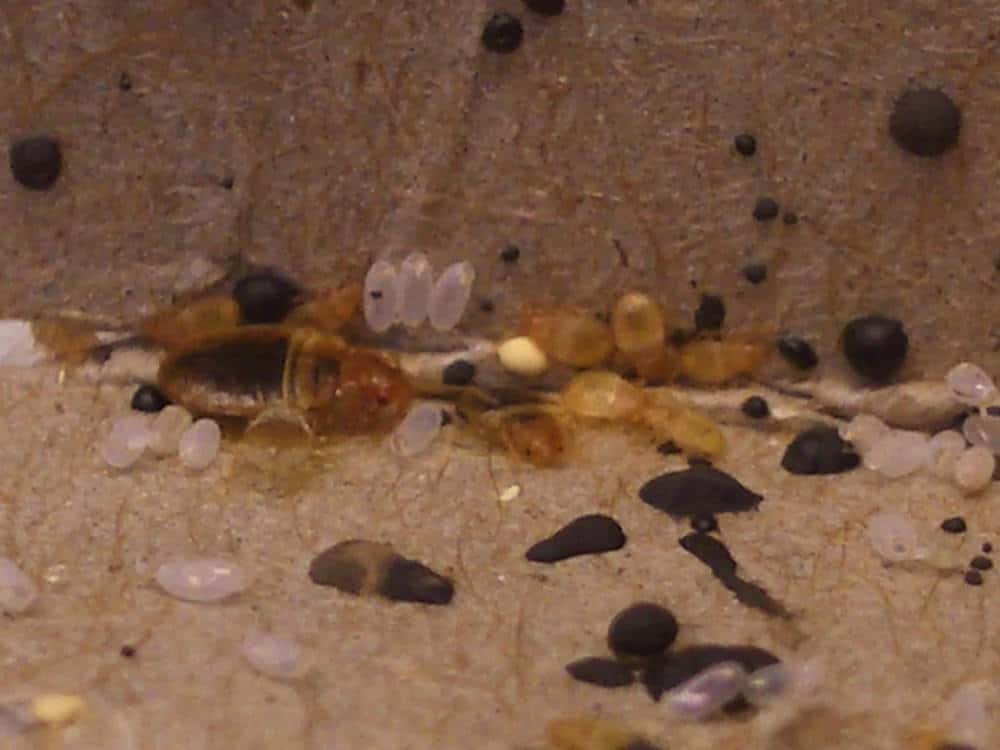
Bed bug eggs are white, oval, and really small at only 1/16th of an inch. They are usually laid in crevices, making them incredibly difficult to spot.
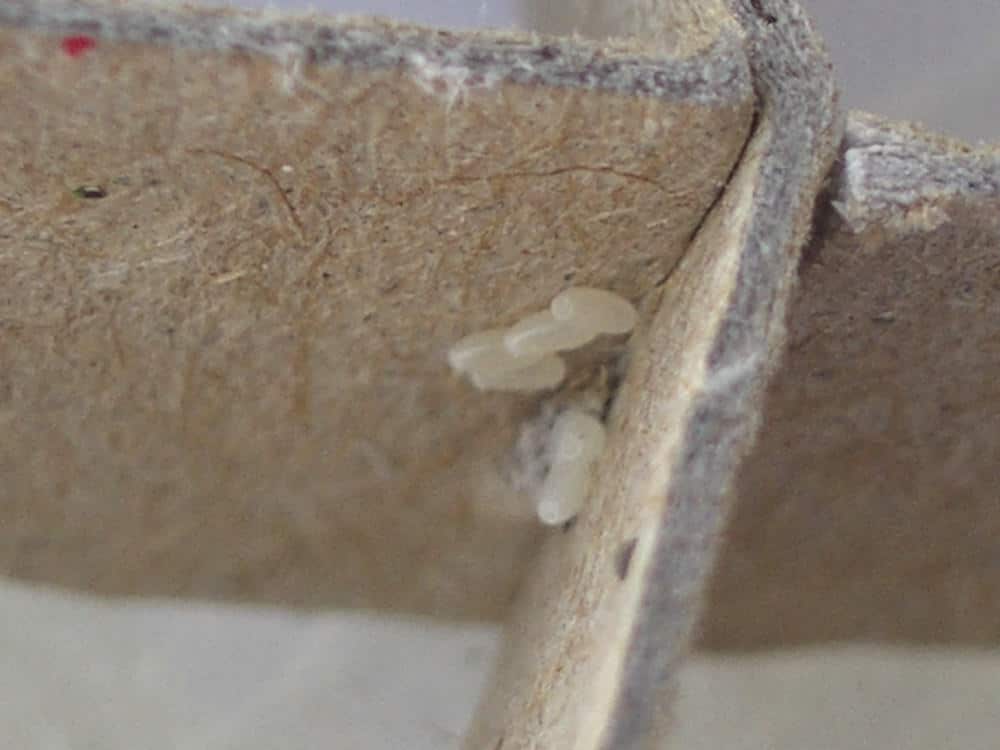
Make sure you have a flashlight handy and a magnifying glass if you need one. It can be hard to spot eggs and exoskeletons without them. Although they can be harder to spot in the day when they’re hiding, it’s sometimes easier to look for them at this time. The bright sunlight flooding into your room will aid your search.
You should also grab a credit card because having something stiff and flat that you can drag along the seams of the mattresses, will help you discover their tiny hiding places. If you’re feeling squeamish at the thought of doing the search, you also might want to put on some plastic gloves.
Don’t forget to check less obvious places where you’ve recently spent a lot of time, to ensure there isn’t a small colony that has become established outside of the bedroom. These places could include home offices, lounges, and even your car.
Just remember, bed bugs rarely cause a huge infestation without leaving at least some trace behind. They can be a messy bug, which is good news for anyone looking for signs that they’re in their home.
Take Action
You won’t know what the best course of action is until your fact-finding mission is complete. Once you have all the information you need, you can decide upon your plan of attack.
If despite your best efforts, you’re still only coming up with that one solitary bed bug, you might be able to breathe a sigh of relief. If you had a large infestation, you’d likely see other signs of bed bugs during the search of your bedroom. You might have picked up a stray bed bug and that carcass you found could signal the end of your problem.
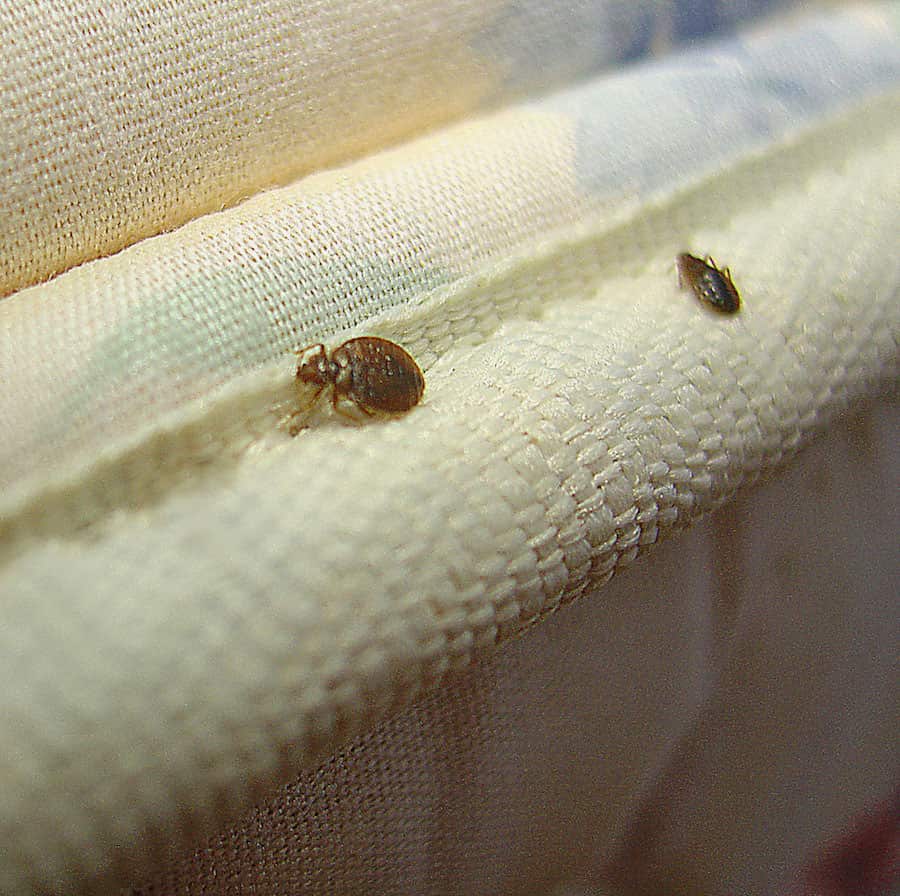
Still, you should remain vigilant and do another search in a week or two just in case you missed any signs or didn’t notice an egg. It takes bed bug eggs anywhere from 6 to 10 days to hatch and once the nymph is born it will start looking for a meal.
If a second look after a week or two reveals nothing and you haven’t noticed any bites, you’re probably in the clear. Although, you should remain on guard for a while and call the exterminator if you notice any signs of bed bugs. Waking up with bites but no other signs of bed bugs should still be a cause to remain vigilant.
If your search did turn up more bed bugs or at least signs that there have been more, then it’s time to start tackling your problem. For a small infestation, you might be able to try to take it on yourself, but if you come across a large infestation, it’s more likely you’re going to need an exterminator.
Summary
Finding a single bed bug can be enough to make you feel alarmed, but it doesn’t necessarily mean you have a large infestation on your hands. You might be lucky enough that this bed bug is an isolated incident. If not, it’s best to know sooner rather than later so that you can start taking steps to free your house of this pest once and for all.

